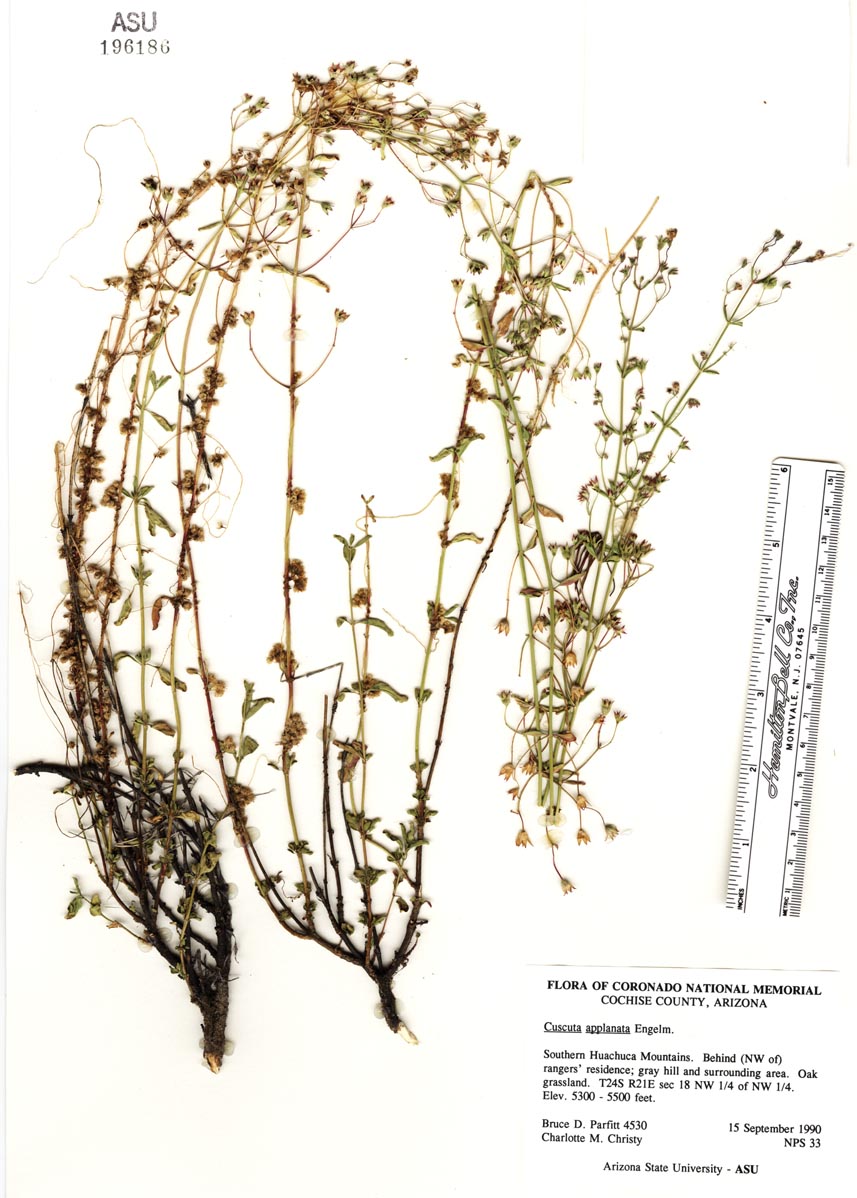
|
Family: Convolvulaceae |
Jepson online (Costea and Stefanovic 2017), Allred and Ivey 2012, Cronquist et al. 1984 Duration: Annual Nativity: Native Lifeform: Forb/Herb General: Wholly parasitic herbaceous vines, usually annual but occasionally perennial if on a perennial host plant; not in contact with the ground but instead attached to its host plant by many small specialized roots (haustoria) along the stem; stems thread-like, the color yellow, orange, or red, occasionally green; generally glabrous. Leaves: Leaves usually absent or can be scale-like, about 2 mm long, alternate along the stems. Flowers: Tiny and whitish, clustered in lateral cymes; sepals 4 or 5, sometimes fused at the base, cream or white; petals 4-5, always fused together, the corolla shape ranging from tubular to bell-shaped or urn-shaped, usually white. Fruits: Capsules spheric to ovoid; containing 1-4 seeds. Ecology: Found on a variety of native and introduced plants. Many species of Cuscuta parasitize select groups of plant families or genera, but some species are generalists. Distribution: There are over 100 species in the genus, distributed around the world, especially in warmer regions of the western hemisphere and Polynesia. Notes: This genus is quite distinctive, with its threadlike, usually yellow to orange stems which grow in a tangled mat covering other vegetation. Some species of Cuscuta cause considerable damage to cultivated legumes, such as alfalfa, in the western US. Identification to species requires flowers and fruit, so be sure to make a good collection. There are 22 species of Cuscuta in New Mexico, 16 in Arizona, and 20 in California. Some authorities divide the genus into 4 separate genera (usually recognized as subgenera in the state and regional floras for our area): Cuscuta, Grammica, Monogynella, and Kadurias. Cuscuta is currently placed within its own family, Cuscutaceae, but it is closely related to the Convolvulaceae and in the past was considered part of that family. Ethnobotany: Various species used to treat digestive problems and incontinence; as a stimulant; and as a contraceptive and abortifacient. Editor: AHazelton 2017 Etymology: Cuscuta is derived from the Hebrew word meaning "to cover," alluding to the growth form. Characters of the family. 100, cosmop. (Grammica) Our spp. bloom in late summer; most have a wide range of hosts. Gleason, Henry A. & Cronquist, Arthur J. 1991. Manual of vascular plants of northeastern United States and adjacent Canada. lxxv + 910 pp. ©The New York Botanical Garden. All rights reserved. Used by permission. |
This project was made possible in part by the Institute of Museum and Library Services [MG-70-19-0057-19].
Powered by Symbiota



